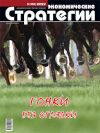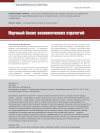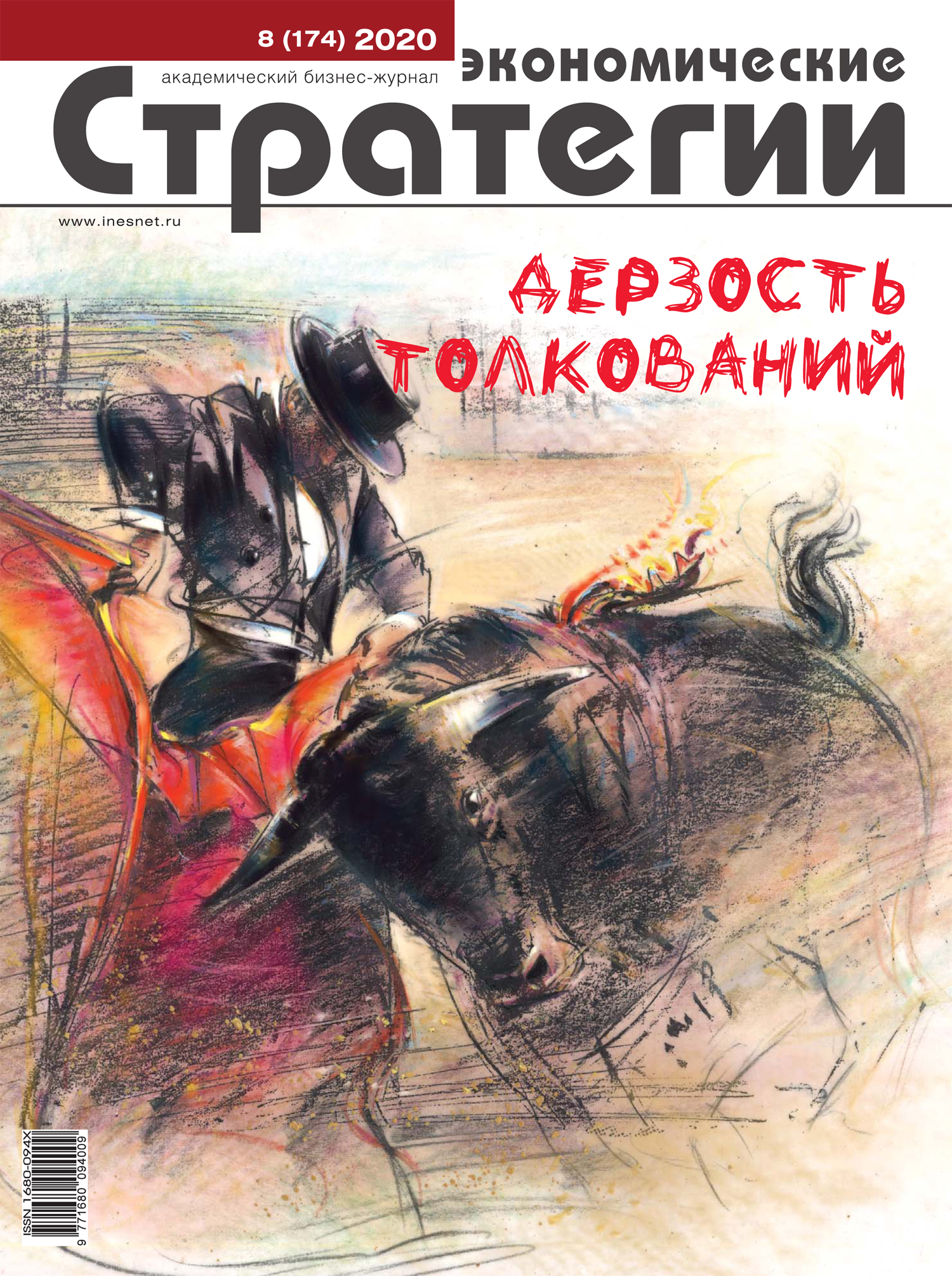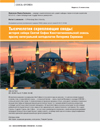Scientific Basis of Economic Strategies
DOI: https://doi.org/ 10.33917/es-3.183.2022.38-53
The scientific basis of energy strategies is represented by the sciences of natural-humanitarian synthesis that study the “nature-man-society” system: ergodynamics, system theory of capital, the science of harmony, synthetic evolutionary ecology. Method of their construction is a deductive one: from the laws of socio-natural development to the society and an individual. National wealth, or country (national) capital, is the main indicator of the state of societies. It is considered as the structural energy (energy potential) of societies in value terms. Country capital is calculated as the sum of physical, human, social and natural capital. Natural capital includes reproducible (ecocapital) and non-reproducible (paleocapital) components. Index of the life quality of societies (changes from 0 to 1) is the arithmetic mean of the ratio of the private capital production of each society to the maximum values of the production of these capitals among all the societies under consideration. The purpose of economic strategies is to ensure the systemic progress of societies. It is implemented with the growth over time of the specific (per person) country capital and, accordingly, the quality of life index. Maximum progress takes place with harmonious resolution of the opposites existing in societies. The article proposes a method for calculating country capital, its components and the life quality index.
Источники:
1. Bushuev V.V., Golubev V.S. Osnovy ergodinamiki [Ergodynamics Fundamentals]. Moscow, Energiya, 2002; izd. 2-e, Moscow, Lenand, 2012.
2. Bushuev V.V., Golubev V.S. Ergodinamika — ekorazvitie — sotsiogumanizm [Ergodynamics — Eco-development — Socio-humanism]. Moscow, Lenand, 2010.
3. Golubev V.S. Priroda — chelovek — obshchestvo: Razvitie i garmoniya [Nature — Man — Society: Development and Harmony]. Moscow Lenand, 2016.
4. Golubev V.S. Garmoniya spaset mir [Harmony will Save the World]. Moscow, Lenand, 2017.
5. Golubev V.S. Vvedenie v sinteticheskuyu evolyutsionnuyu ekologiyu [Introduction to Synthetic Evolutionary Ecology]. Moscow, Papirus Pro, 2001.
6. Bushuev V.V., Golubev V.S., Orlov I.B. Vvedenie v sistemnuyu teoriyu kapitala [Introduction to Systemic Theory of Capital]. Moscow, Lenand, 2013.
7. Bushuev V.V., Golubev V.S., Tarko A.M. Strukturnaya energiya kak potentsial razvitiya: Mir i Rossiya [Structural Energy as a Development Potential: World and Russia]. Moscow, Lenand, 2014.
8. Bushuev V.V., Golubev V.S., Kurakov L.P. Problemy formirovaniya sotsiogumanitarnoi tsivilizatsii [Problems of Shaping Socio-humanitarian Civilization]. Moscow, IAEP, 2016.
9. Bushuev V.V., Golubev V.S. Estestvenno-nauchnye osnovy sotsial’nogo gumanizma [Natural-scientific Foundations of Social Humanism]. Moscow, Lenand, 2018.
10. Golubev V.S. Ocherki ekosotsiogumanizma [Essays on Ecosociohumanism]. Moscow, Lenand, 2021.
11. Korbalan F. Zolotoe sechenie. Matematicheskii yazyk krasoty [Golden Section. Mathematical Language of Beauty]. Moscow, De Agostini, 2014.





